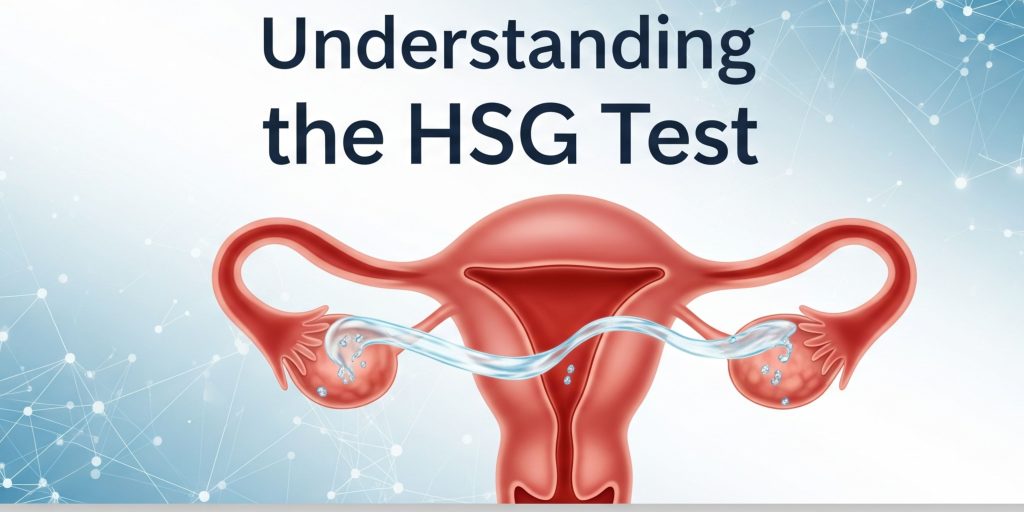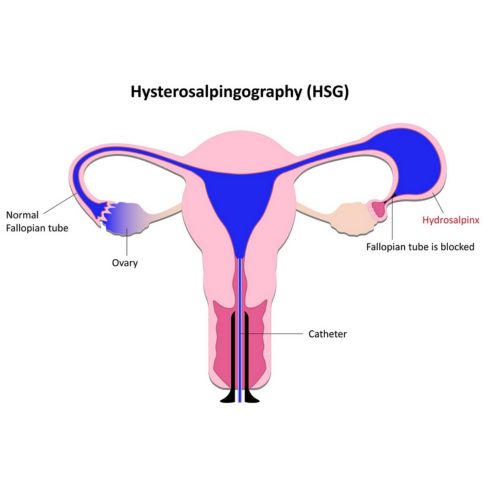
When couples face challenges in conceiving, one of the first steps is to check the health of the woman’s reproductive system. A commonly recommended diagnostic tool is the Hysterosalpingography (HSG) test. At SRI IVF Patiala, we often advise this test for women undergoing fertility evaluation. Let’s break down what it is, why it matters, how it’s performed, and what you should know about side effects.
What Is the HSG Test?
HSG (Hysterosalpingography) is a specialized X-ray procedure used to examine the uterus and fallopian tubes. During the test, a contrast dye is introduced into the uterine cavity, and X-ray images are taken to see whether the fallopian tubes are open or blocked.
This test provides valuable information about the shape and condition of the uterus, as well as whether the tubes are clear enough for eggs to travel and meet the sperm.
Why Is the HSG Test Important?
The HSG test is often one of the first diagnostic steps in evaluating female infertility. Its importance lies in the following:
- Detects Blocked Fallopian Tubes: Tubal blockage is a major cause of infertility. HSG helps determine if the tubes are open.
- Assesses Uterine Shape: Abnormalities like fibroids, adhesions, or congenital malformations can be detected.
- Guides Treatment Plans: Based on results, fertility specialists can decide whether treatments like IUI or IVF are necessary.
Simply put, HSG gives a clear picture of the pathways that are essential for conception.
Related Blog Topic : Can I Get Pregnant with Blocked Fallopian Tubes?
How Is the HSG Test Done?
The HSG test is a simple outpatient procedure and usually takes about 15–30 minutes. Here’s what to expect:
- Timing: The test is usually scheduled after menstruation but before ovulation (Day 7–10 of the cycle) to ensure the woman is not pregnant.
- Preparation: A mild pain reliever or antibiotic may be prescribed before the procedure.
- Procedure:
- The woman lies on an X-ray table.
- A speculum is inserted, and a thin catheter is placed into the uterus.
- Contrast dye is introduced, filling the uterine cavity and fallopian tubes.
- X-ray images are taken to track the dye’s movement.
If the dye flows freely through the tubes and into the abdominal cavity, it means the tubes are open. If not, a blockage is present.

Are There Any Side Effects?
The HSG test is generally safe, but like any medical procedure, it can have some side effects:
- Mild Cramping or Discomfort: Similar to menstrual cramps, usually subsides within a few hours.
- Light Spotting: May occur for a day or two.
- Infection (Rare): Preventive antibiotics may be prescribed.
- Allergic Reaction: Rarely, some women may react to the dye used.
Most women tolerate the test well and return to normal activities the same day.
Final Thoughts
The HSG test is a simple yet powerful diagnostic tool in fertility treatment. By identifying blocked tubes or uterine issues, it helps fertility specialists design the best treatment plan. At SRI IVF Patiala, we ensure the procedure is performed with utmost care, comfort, and accuracy, giving couples clarity and confidence in their journey toward parenthood.
